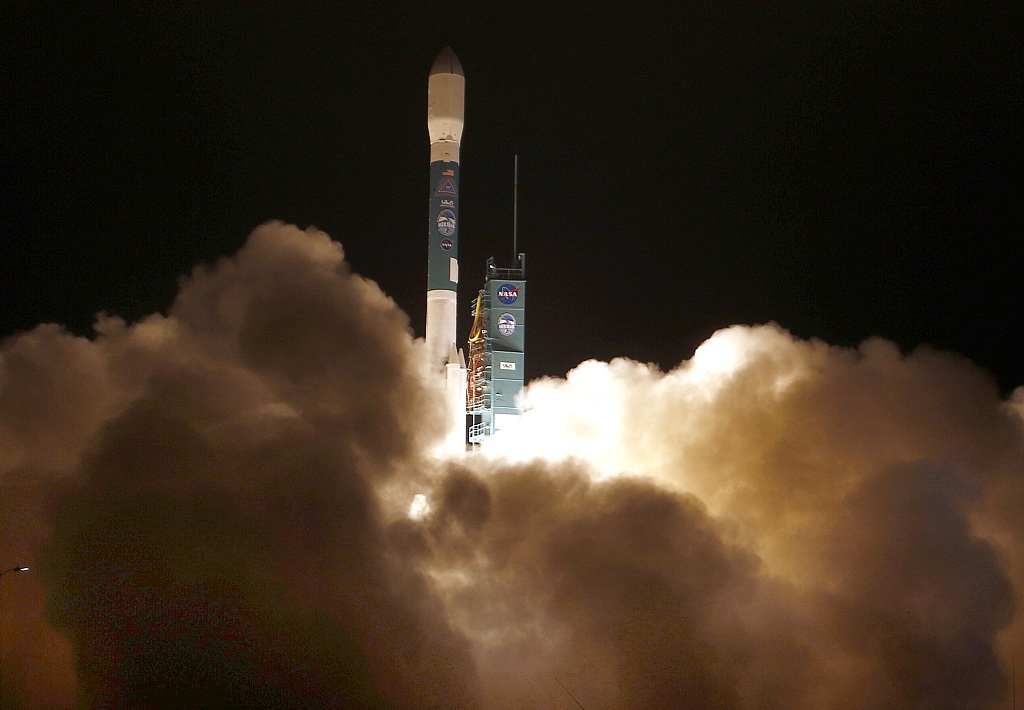
In this handout image provided by NASA, The United Launch Alliance (ULA) Delta II rocket is seen as it launches with the NASA Ice, Cloud and land Elevation Satellite-2 (ICESat-2) onboard, Saturday, September 15, 2018, Vandenberg Air Force Base in California. (Photo: VCG)
NASA's most advanced space laser satellite blasted off Saturday on a mission to track ice loss around the world and improve forecasts of sea level rise as the climate warms.
Cloaked in pre-dawn darkness, the $1 billion, half-ton ICESat-2 launched aboard a Delta II rocket from Vandenberg Air Force base in California at 6:02 am (1302 GMT).
"Three, two one, liftoff!" said a launch commentator on NASA television.
"Lifting ICESat-2 on a quest to explore the polar ice sheets of our constantly changing home planet."
The launch marks the first time in nearly a decade that NASA has had a tool in orbit to measure ice sheet surface elevation across the globe.
The preceding mission, ICESat, launched in 2003 and ended in 2009.
The first ICESat revealed that sea ice was thinning, and ice cover was disappearing from coastal areas in Greenland and Antarctica.
In the intervening nine years, an aircraft mission called Operation IceBridge, has flown over the Arctic and Antarctic, taking height measurements of the changing ice.
But a view from space -- especially with the latest technology -- should be far more precise.
An update is particularly urgent since global average temperatures have climbed year after year, with four of the hottest years in modern times all taking place from 2014-2017.
"Loss of things like the sea ice that covers the Arctic ocean affects our weather, and loss of ice that covers Greenland and Antarctica raises sea level," said Tom Wagner, cryosphere program scientist at NASA.
He added that the satellite should reveal new insights into the ice in the deep interior of Antarctica, which is area of mystery to scientists.


